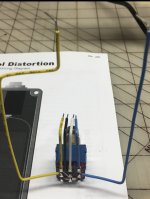Discobungle
Member
I was just wondering what's everyone's preference for soldering the wiring and specifically what's your order. I'm asking to refine my own order, which I am not really happy with. I always have a tough time navigating the wires to the DC jack because of space. For example, my order is:
1. solder the breakout board wires to the PCB
2. solder the input and output jack wires to the PCB
3. solder the DC jack wires to the PCB
Also, how many of you solder all wires while the pcb and jacks are already in the enclosure. I tend to leave mine out of the enclosure until I solder the DC jack.
Thanks in advance,
Steve
1. solder the breakout board wires to the PCB
2. solder the input and output jack wires to the PCB
3. solder the DC jack wires to the PCB
Also, how many of you solder all wires while the pcb and jacks are already in the enclosure. I tend to leave mine out of the enclosure until I solder the DC jack.
Thanks in advance,
Steve


